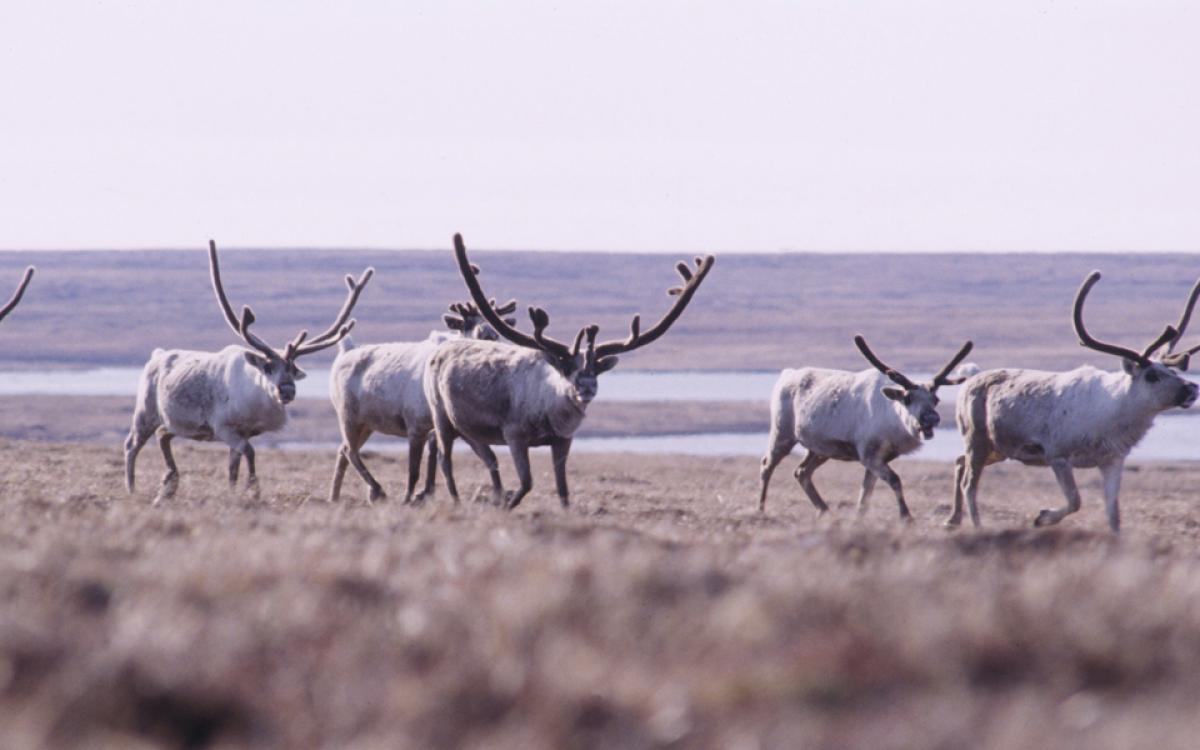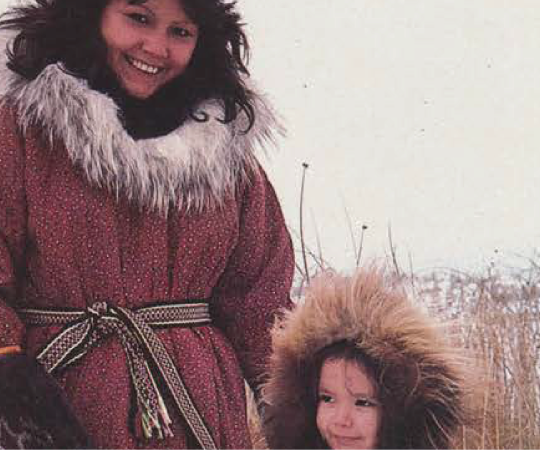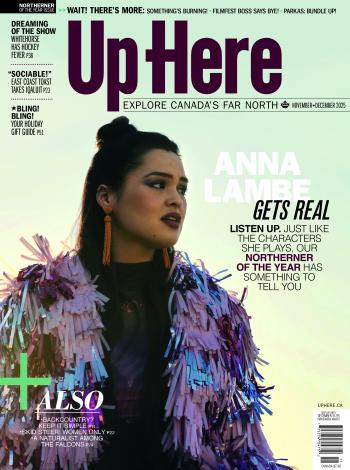My cousin Dave and I were always the first to kneel by the cardboard. We’d wait patiently and expectantly as my grandfather began placing various Arctic delicacies out for his family to enjoy. Surrounded by aunts, uncles and cousins, there was little room for standing, let alone sitting. But there was always room for anyone who wanted to eat. Their door was never locked and they never turned anyone away, especially if you were hungry.
Frozen tuktu (caribou) was a staple, along with iqaluk (fish), sometimes mataaq (narwhal or beluga blubber) and maybe some igunaq (fermented walrus meat)—known affectionately as Igor—if it happened to be ripe and ready. The best meals, I learned early on, were not shared while seated at a table on proper chairs, but while kneeling around flattened cardboard on the kitchen floor, encircled by relatives and friends—all of us armed with our cutting tools, women with their ulus and men with their knives.
When the meat was just out of the deep freeze, my grandfather would begin by hacking away at the frozen carcass with a meat cleaver, hitting it with a perfect accuracy and severing various sized portions so the women and children could begin carving out their own tiny morsels.
My grandfather once offered me the caribou eyeball, his very favourite part. He held it up to me with a twinkle in his eye and a huge dentured grin.
It was a rite of passage of sorts. We learned our way around the tools and the meat, the art and appreciation of handling sharp blades and respect for the food we were consuming. Tuktu quaq (raw frozen caribou) was our absolute favourite. Instead of sugar plums, frozen bits of caribou danced in our heads, with visions of tunuq (caribou butt fat) sandwiched on top and dipped in soya sauce or sprinkled with salt. Or sometimes just plain with nothing at all but the melty, meaty goodness.
We’d wait until the adults were finished so we could try our hand at the big chunk of carcass the adults had been working away on. We wanted to see how we fared; this was our chance to hack away at it on our own. The adults would admonish us to be careful but they allowed it. I was always amazed at how well my ataatasiaq (grandfather) could hit the frozen meat in the perfect spot over and over until the desired piece was shaved off. Later, as the meat softened, it became a much less difficult affair and pieces could be removed with just a tiny bit of applied pressure.
One of my grandfather’s favourite foods was caribou head stew, which looks as gruesome as it is delicious. My grandfather once offered me the caribou eyeball, his very favourite part. He held it up to me with a twinkle in his eye and a huge dentured grin. The big googly eye staring at me as if into my soul, the jellied fat wobbling in his wrinkled fingers.
My mother looked at me as if to say, if you don’t eat it you will hear about this later. She gently nodded her head to encourage me to accept the offering and so I did. A couple of my cousins snickered and nudged each other in the corner, wondering how I would handle it. I closed my own eyes and took a bite. The squishy texture wasn’t as bad as I had feared and the taste was rich and fatty. My grandfather asked me how I liked it. I smiled and said it just tastes like uqsuq, or fat. He beamed pride and gave me a little pat on my head. I was relieved he hadn’t been pulling a trick on me; he really wanted to share something with me that he loved, because he loved me
As with any culture, the way to find near instant acceptance is to try the food—the more off-putting the better. This goes for people within the culture as well. Elders adore children who are not picky, they praise the ones that accept what is offered without making a fuss. That’s important when you come from a culture where finicky eaters probably wouldn’t survive many winters. When my mother took me along on visits to local elders homes, she’d stop in the porch just before entering, grab me by the hand and sternly say: “Don’t make a face, don’t say it stinks and eat what you are offered.” That’s good advice for anyone who might find themselves fortunate enough to be invited to kneel down by the cardboard and partake in the richness of Inuit soul food.










